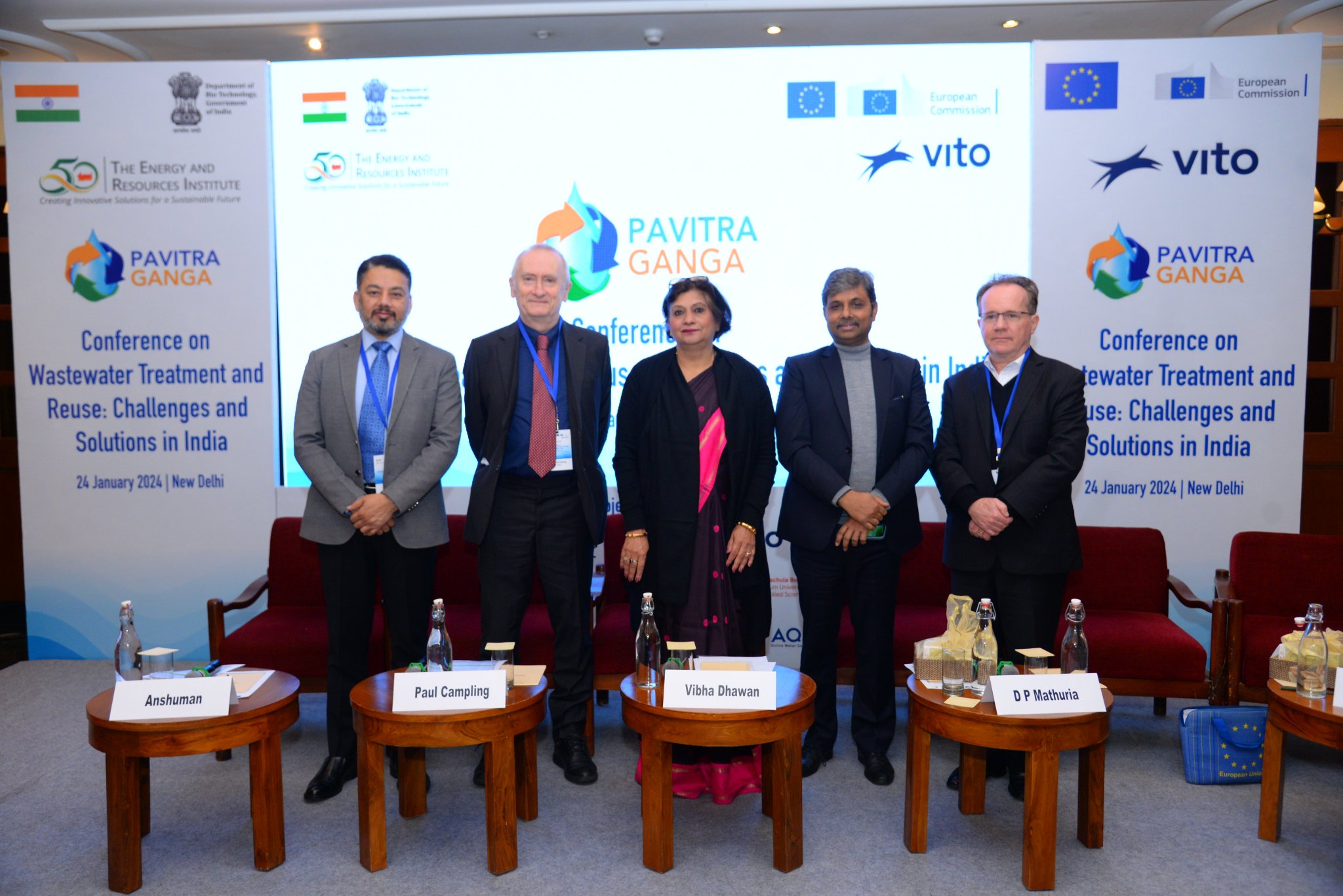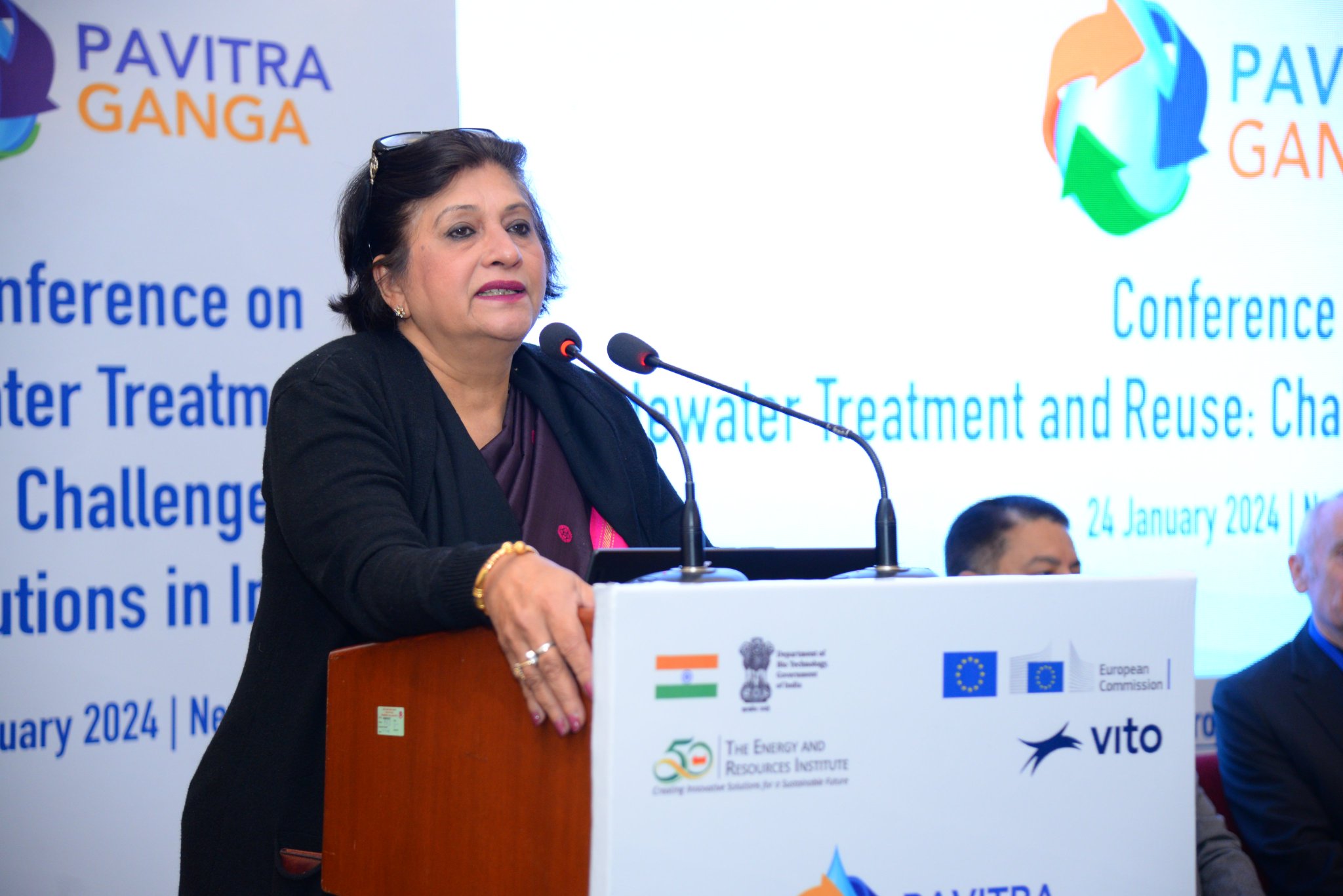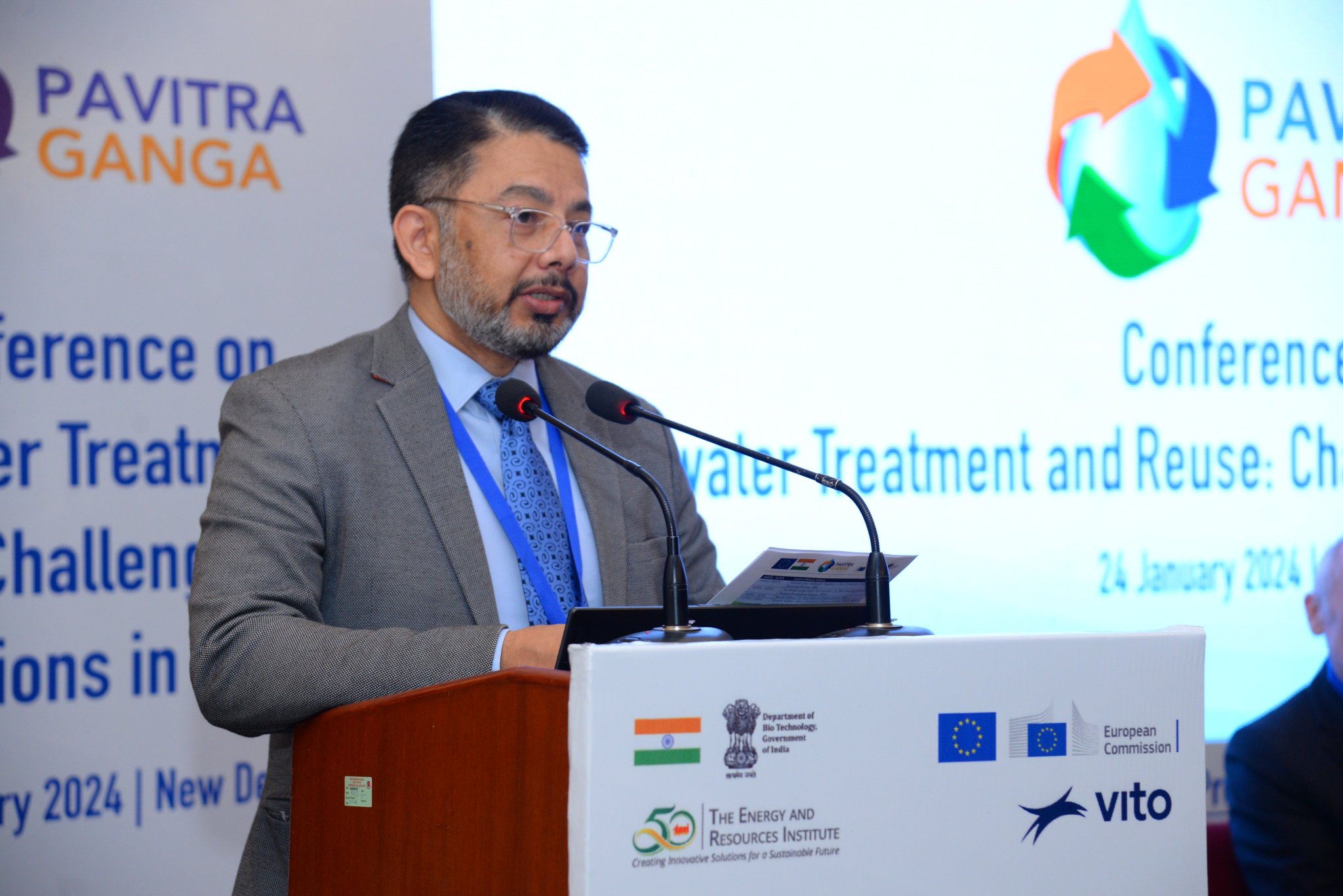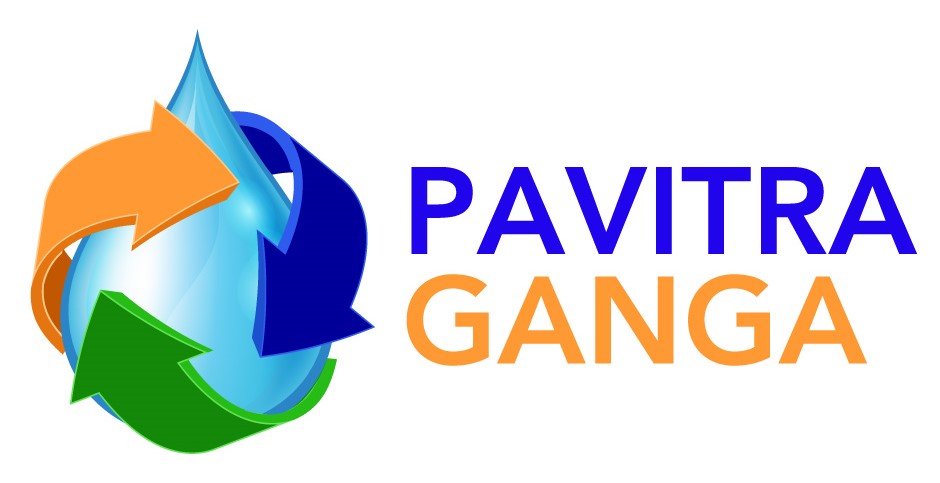After almost five years of collaborative research and innovation, the moment was there to organise our Final Conference and to showcase our outcomes and conclusions. Over a 100 policy makers, academics, students and water practitioners joined us on Wednesday 24 January 2024 at the India Habitat Centre, New Delhi for a lively and engaging event, while the Conference was also followed on-line by participants from India and Europe.

The project partners were honoured with the dignitaries present at the Conference.
There was an inaugural address by G. Asok Kumar, Director General of the National Mission for Clean Ganga (NMCG) ,(Ministry of Jal Shakti, Government of India) who thanked the involved partners and shared his thoughts about the work done and the progress made by NMCG. He also brought hopeful news about the improving water quality and restoring natural habitats and fauna in the River Ganga.

There was also a special address by Shri D.P. Mathuria (CE, PDO, Central Water Commission, Ministry of Jal Shakti, Gol). He brought hope for the future with the increasing availability of technological and economic solutions to develop measures to handle both point and diffuse pollution. It was a pleasure to have him back with us as he was also there as our special guest at the Kick Off Event of Pavitra Ganga in March 2020.

From the European side, there was a special address by Mr Pierrick Fillon-Ashida (First Counsellor - Head of Research & Innovation Section, Delegation of the European Union to India). He made an added plea for the need to also look at increasing the mobility of scientists and students between Europe and India. He expects that that there will soon be new funding support to upscale wastewater treatment and water supply innovations, some of them demonstrated in the EU-India Water Projects.
The Director General of The Energy and Resources Institute (TERI), Dr. Vibha Dhawan, welcomed the participants and made a call for a wide scale roll out of wastewater technology. Given the size of the population and the population density, we should all realise that water in India is a scarce resource, she said. “It is therefore crucial to convince our countrymen and women to understand that there is no such thing as ‘waste’ or ‘wastewater’. It is a resource that needs to be reused and so are some of the pollutants in that water…
The technologies Pavitra Ganga is piloting at the demo sites are innovative but, all in all, also relatively simple. The potential of these technologies is thus clear. If we can combine this knowhow with thorough LCAs, we can make the right choices for investments and make our water systems ready for the future.”

The Project Coordinator, Paul Campling (VITO) and the Scientific Coordinator, Anshuman (TERI), provided an overview of the project’s goals, approaches and the most important conclusions for taking wastewater treatment, smart water management and water governance forward.
Anshuman stressed the need for target-based regulations, defined national reuse standards for treated wastewater and sewage sludge and an effective enforcement strategy for India. He also pointed out that wastewater reuse can only become successful when pricing mechanisms are introduced that make the price of treated wastewater lower than that of available freshwater. Next to that incentives and mechanisms should be worked out for circular water use in the industry.

Paul Campling made a plea for a broader introduction of smart water management approaches in India, providing an overview of recent experiences in Flanders, to give inspiration. The integration of technology and data management leads to more efficiently managed water resources. Sensor networks producing real time data bring new insights and leads to actionable information for better management. But the investment costs for smart water management are not insignificant, with operation and maintenance costs being considerable, requiring trained technicians to implement properly.
Results and insights on all project work packages
The project partners and work package leaders brought keynote speeches and presentations about the project work and the gained insights and lessons learned. For more detail about the results of the project we advise you to read our newsletters, follow our social media and check our project website. We will bring updates and reports in the coming time for all work packages.
